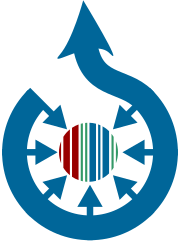Commons:Structured data/GLAM/Platform
The knowledge kept by GLAMs can be easily shared on-wiki as Structured data. To know in which Wikimedia platform to share it, first, it may be necessary to analyze the state of the collection, the way the information is structured, and even what kind of information is available.
Platform workflow
The basic information about some of the platforms used by GLAM and other cultural institutions to share their collections:
| Wikidata | Wikimedia Commons | Wikisource | Wikipedia |
|---|---|---|---|
Focus on metadata:
|
Focus on multimedia files and metadata:
|
Focus on documents and data:
|
Focus on encyclopedic information:
|
Wikimedia Commons

For Wikimedia Commons, the essential step is to have a media file. Users usually apply some information about the item on templates, such as Information or Art Photo, which appears on the file's summary. However, that information is not structured, even though it might be linked to Wikidata, and can not be translated to different languages that easily, nor is well ranked in the new Media Search, that allows files to be more findable on Commons.
Structured Data on Commons solves the problem of translation and search, but the information needs to be modeled in a structured format. Wikidata is also a solution to this problem. Yet not all and every item from GLAM collections should or could be shared on Wikidata, because they do not have a heritage status or an encyclopedic relevance.
- Example
This is the case of the items from the Digital Public Library of America (DLPA). This institution is one of the biggest Wikimedia Commons contributors, with more than 2 million files shared, but not all of their items necessarily have the encyclopedic relevance to be on Wikidata as an item.
For that reason, DPLA only shares its collection on Commons and it's slowly adopting Structured Data on Commons to its files, in order for them to become structured, searchable, and translatable, even if they are not on Wikidata.
Wikidata
The essential step for Wikidata is to have an item with data that can be modeled and structured, but also with an encyclopedic relevance, such as a heritage status. This is not the case for all the items from every GLAM institution all over the world, as explained in the previous section.
- Example
This is the case for some items from the Metropolitan Museum of Art (The Met). This institution is a large Wikidata contributor, because some of its items have a proper heritage status and encyclopedic relevance.
The Metropolitan also shares media files and it's a huge contributor to Wikimedia Commons. The institution's items on Wikidata usually include an image file linked to it and detaileded metadata. At the same time, the media files from the Met available on Wikimedia Commons are also eligible to use Structured Data on Commons.

Wikimedia Commons and Wikidata

Some institutions, like the Metropolitan and many others, not only can use Wikidata to rely on the platform's connectivity, but also Wikimedia Commons and the Structured Data on Commons options, interconnecting both platforms.
Items with heritage relevance are kept on Wikidata with their metadata, but also shared on Wikimedia Commons with their media file and information. These items can then be shared with Structured Data, using fields such as Copyright, Digital representation of, Depicts, Source, and File Captions, which are important to the media file itself and can easily become machine-readable, searchable, and translatable. Eventually, they will also become even more findable and usable on other Wikimedia projects, such as Wikipedia in various languages, due to the objectives of the Structured Data Across Wikimedia project.
